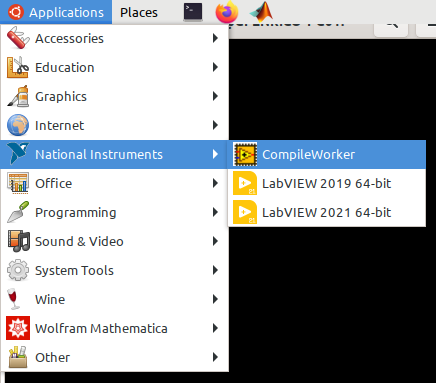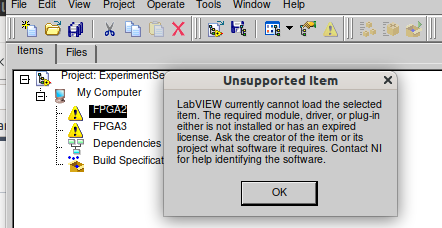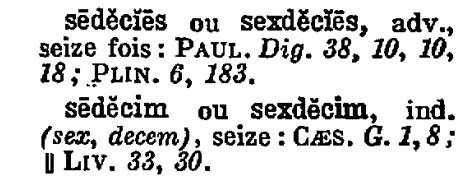-
Posts
583 -
Joined
-
Last visited
-
Days Won
26
Content Type
Profiles
Forums
Downloads
Gallery
Everything posted by ensegre
-
Noting down this mainly for self reference since it occurred to me time and again, in case it helps others too. I have several recent versions of LV installed on Ubuntu 20.04 (with alien). The nice thing is that somehow a NI deb package stream became known to the system, and some package upgrades are found automatically. However there is one caveat: each time the kernel is upgraded, several NI dkms kernel modules need to be recompiled. Usually that is automatically done, but sometimes stumbles on a missing config/modversions.h file. It seems that not every kernel headers package includes it. Missing that, LV crashes as soon as anything needing one such modules is loaded. E.g., as an easy test occurrence, when putting a new VISA control on an empty FP. The solution is trivial: if the (usually empty) file is missing, create it with sudo touch /usr/src/linux-headers-XX.YY.ZZ-generic/include/config/modversions.h where XX.YY.ZZ is the kernel du jour version (e.g. 5.13.0-28 as of today). sudo apt reinstall ni-kal and a reboot then fix the crash.
- 1 reply
-
- 3
-

-

-
right. In fact, all the three DS... I see. The xnode GetValueByPointer is geared to create the CLN in any thread IIUC its code.
-
The VIs are in <vi.lib>/Utiity/importsl/
-
Yeah, https://forums.ni.com/t5/Developer-Center-Resources/Dereferencing-Pointers-from-C-C-DLLs-in-LabVIEW/ta-p/3522795?profile.language=en. Still I miss at the moment how to write in memory without writing a wrapper. Btw IMAQ has also https://zone.ni.com/reference/en-XX/help/370281AG-01/imaqvision/imaq_mempeek/, but again only for reading. [in linux, we're talking of /usr/local/natinst/LabVIEW-XX/resource/libmgcore.* I guess]
-
From memory, basically these. Though not quite, because the write part appears to want a Cstring, and thus stumbles on zeros in the data. I think the most frequent case I had to deal with was that of a library returning the buffer to a filled pointer, which I only had to read.
-
You display a NI badge and you're asking this from us??? What is this, a joke? Anyway, the problem is solved for NXG and so there is no need to ask further. https://forums.ni.com/t5/LabVIEW-Idea-Exchange/Support-Unicode/idi-p/921449
-

xygraph Moing plots againt one another in XY graph
ensegre replied to Mahbod Morshedi's topic in LabVIEW Community Edition
Also I don't understand the purpose of your while loop -
well, they are different, they measure different things. The question would be what is more meaningful in one or another use case. When I started thinking at it I had in mind an input corrector (which I'm not sure I'll really pursue) which warned the user about possible misspellings and likely corrections, but then one might consider that compared to "Digital input D1", "digital input D2" may be more right than "diggital input D1". Heuristics.
-
The download page says that the package is for 32bit, but all the rpms provided in it are x86_64, and so assumes the INSTALL file at quick skimming through it; OTOH $ file /usr/local/natinst/nifpgacompileworker/CompileWorker.exe /usr/local/natinst/nifpgacompileworker/CompileWorker.exe: PE32 executable (GUI) Intel 80386 Mono/.Net assembly, for MS Windows I added /usr/local/natinst/mono/lib64 to /etc/ld.so.conf and sudoed ldconfig, but I remained at the same point. I think I'll leave it as "whatever", for now, I see that for the project in question I have other compilation options, so I can live without. But thanks anyway for the feedback, Rolf!
-
Here they come for 2019. For the little these require sets, i.e. only to find the common elements among two character arrays, I think that it would be pretty easy to reimplement them without, for earlier versions. StrikeAMatch.vi StringDigrams.vi
-
Thanks, I'll check your one too. I've seen out on the internet that the most popular method suggested is the Dice (strike a match) metric, followed by the Levenshtein, beyond that it looks as it is mostly for theoreticians. Since the metrics have different merits, I have yet to figure out which may be better for what I have in mind. In the meantime, however, here is my quick implementation of Dice. LV2021, based on sets, hence not so backportable (down to 2019, perhaps). StringDigrams.vi StrikeAMatch.vi
-
I see. So your one seems pretty similar to the Strike a Match, IIUC, with the differences that 1) it strips away from the strings all chars not in [0-9,a-z] (what, no uppercase?) (good for literal strings, but otherwise not always) (could be probably done more synthetically with a regexp), and that it uses the arithmetic sum of two ascii codes instead of a true digram, which can create more false matches. A starting point anyway, thanks.
-
Out of curiosity, does anyone know of an available labview implementation of a string similarity algorithm? I might have a use case for it in a coming project. I've seen that out there there is a lot, so at worst I might end up toying with reimplementing one. e.g. https://stackoverflow.com/questions/653157/a-better-similarity-ranking-algorithm-for-variable-length-strings?noredirect=1&lq=1 https://en.wikibooks.org/wiki/Algorithm_Implementation/Strings/Dice's_coefficient
-
of course, this I've done by the book as many other times.
-
Thanks, good to see them. I hadn't done that much, the dependencies I had already picked up probably from whichever other installation, and yet vipm works fine for me with LV2019. In particular these links and +x seems unnecessary for me: (anyway I tried it and does not magically allow connection to 21)
-
one issue which I had but overcame, about listing, was that the binary of 20 and 21 is /usr/local/natinst/LabVIEW-xx/labviewprofull instead of just labview. A symlink made them appear in the list. Connection to them still fails though.
-
Is anyone anyway able to use this vipm with LV>2019? I've just checked two installation which connect fine to LV2019, but not to 2020 nor 2021. Standard settings of vi server port & authorization checked by the book. Or are recent versions of LV simply not supposed to be supported by that old release of vipm?
-

Front Panels turning to gibberish Chinese (CAR 185890)
ensegre replied to eberaud's topic in LabVIEW General
Zyga posted a solution for the linux font problem (probably not the CAR referred to, as Manudelavega wrote): -
At last! Good catch!
-
that is, $ /bin/bash -c 'cd /usr/local/natinst/nifpgacompileworker/ && /usr/local/natinst/nifpgacompileworker/cw_wrapper.sh mono /usr/local/natinst/nifpgacompileworker/CompileWorker.exe' Unhandled Exception: System.TypeInitializationException: An exception was thrown by the type initializer for System.Drawing.GDIPlus ---> System.DllNotFoundException: libgdiplus.so at (wrapper managed-to-native) System.Drawing.GDIPlus:GdiplusStartup (ulong&,System.Drawing.GdiplusStartupInput&,System.Drawing.GdiplusStartupOutput&) at System.Drawing.GDIPlus..cctor () [0x00000] in <filename unknown>:0 --- End of inner exception stack trace --- at System.Drawing.Graphics.FromHdcInternal (IntPtr hdc) [0x00000] in <filename unknown>:0 at System.Windows.Forms.XplatUIX11.SetDisplay (IntPtr display_handle) [0x00000] in <filename unknown>:0 at System.Windows.Forms.XplatUIX11..ctor () [0x00000] in <filename unknown>:0 at System.Windows.Forms.XplatUIX11.GetInstance () [0x00000] in <filename unknown>:0 at System.Windows.Forms.XplatUI..cctor () [0x00000] in <filename unknown>:0 $ locate libgdiplus.so /usr/local/natinst/mono/lib64/libgdiplus.so /usr/local/natinst/mono/lib64/libgdiplus.so.0 /usr/local/natinst/mono/lib64/libgdiplus.so.0.0.0
-
Thanks Rolf. So far what I understood, after some search on NI site and getting more familiar with the terminology ("compilation worker", "target support driver", etc.), is that NI decided not to include the PCIe-7852R target support in versions of the Windows LV FPGA module past 2014, even though with LV up to 2021 it installs ISE 14.7 as part of the toolchain which, as for Xilinx is concerned, might support it. So even if I was able to set a linux compile worker and point it to an appropriate machine (and in fact I can - to the NI FPGA cloud), I'm still stuck with LV 2014 for development. For this particular project, I think I'll split it to a FPGA backend built with 2014, whereas the fancy UI and business logic could be in 2021, with some intercommunication between the two - udp, datasocket, VI server, something. The academic question about whether it is possible to install the compile worker on ubuntu still stands though... I remember that, digging into, the compile worker would have been launched with mono, and launching complained about a missing dll. Tomorrow I might be more precise about the error I got.
-
Has anyone succeeded in some way to get it functional? I'm trying to set up a modern development environment for a project using a legacy PCIe-7852R. That demands ISE 14.7; On windows 10 that in turn is recognized by the FPGA installation of LV2014, but not supported on more recent versions of LV. The solution hinted by NI is to move to a win7 platform, but I haven't found one available at the moment. What I did is, as I usually do, grab all the rpms from the content of the iso I downloaded from https://www.ni.com/en-il/support/downloads/software-products/download.labview-fpga-compilation-tool.html#346211, move them to a /tmp directory and run on them alien --install --scripts *.rpm (and solving some small conflicts on the way). I chose the 2019 version for installing on a machine with LV2019 and 2021 already installed in the same way. At the end of the process I'm left with respectable directories /usr/local/natinst/nifpgacompileworker (15MB), /usr/local/natinst/NIFPGA/ (9.4GB) and /usr/local/natinst/mono (94MB), but neither LV2019 seems to be aware of a FPGA module (would it?), nor I know how otherwise run the compilation tool (e.g. for example to convince the win10 machine that the linux one could act as compilation server). Any idea? How is the FPGA module really working on a supported linux target, rpm based, where it is installed using the proper INSTALL script provided by NI?
-

LabVIEW hangs with logarithmic mapping on XY Graph (silver)
ensegre replied to jmurray's topic in LabVIEW General
No hang seen in my LV2020 linux, only (after some manipulation) an X scale and label in a wrong place above the graph. But anyhow, I've seen across the years individual controls occasionally becoming corrupted and behaving foul. The easiest solution then is just to recreate the control anew. My impression is that control themselves include their own callback code, to be responsive e.g. to appearance change, even at edit time. On occasions, this result in some insanity, like infinite loops.






